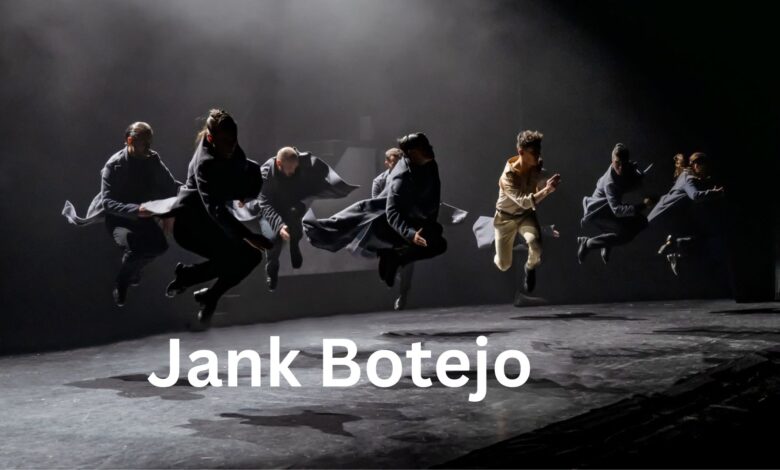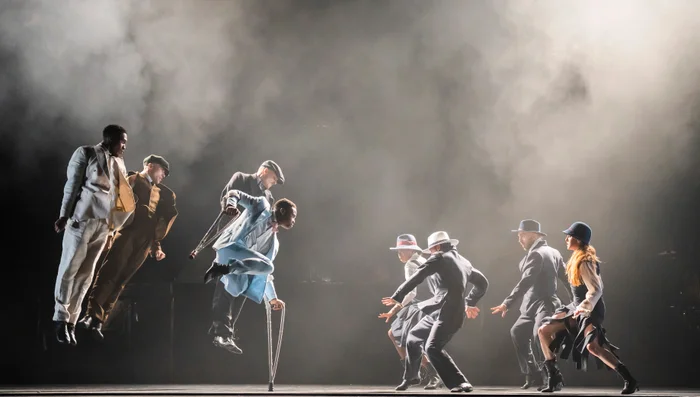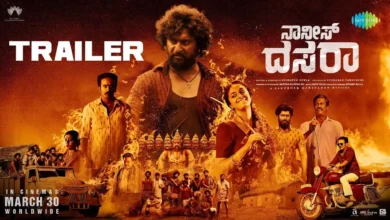Jank Botejo A Living Tradition of Music, Dance, and Storytelling

Introduction
Jank Botejo is a cultural phenomenon that blends music, dance, and storytelling into a vibrant celebration of community, history, and nature. With its roots deeply embedded in traditional practices, Botejo has evolved over centuries while maintaining its essential role in preserving cultural identity. This art form remains relevant in modern times, bridging generations and bringing people together through its mesmerizing rhythms, colorful performances, and shared history.
In this article, we explore the history, significance, rituals, modern adaptations, and why Botejo continues to be a vital part of cultural heritage today.
The Origins and History of Jank Botejo
Botejo is not just a form of entertainment—it is an ancient cultural expression that reflects the values, struggles, and celebrations of the communities from which it originates. Understanding the roots of Botejo is key to appreciating its significance.
Ancient Beginnings: A Spiritual Connection
Botejo’s origins can be traced back to early agricultural societies where it was used in various rituals and ceremonies. Early forms of the practice were closely linked with the cycles of nature and the spiritual beliefs of the community. During harvest festivals, for instance, music and dance were an integral part of offering thanks for the land’s bounty. Participants in these events believed that such celebrations would help ensure a good harvest in the following year.
Evolving Over Time: Regional Influences and Adaptations
As centuries passed, Jank Botejo evolved in response to regional influences and changing social dynamics. Communities began adapting the practices to reflect their own local customs, cultural values, and historical contexts. Regional styles of music, instruments, and dance were integrated into the performance, adding diversity while maintaining the core elements of the tradition.
One of the most notable changes over time was the incorporation of different musical instruments, from traditional drums and flutes to more complex string instruments. As trade and communication increased, the art form started to absorb influences from neighboring cultures, leading to the creation of different regional variants of Botejo.
Botejo as a Tool for Storytelling
Storytelling has always been a central aspect of Botejo. Through music and dance, people conveyed the histories of their ancestors, heroic tales, and moral lessons. Elders would narrate stories, often related to battles, important events, or the gods and spirits, while younger generations would enact these stories through dance. This ensured that cultural knowledge was passed down, making Botejo an essential form of education.
The Cultural Significance of Jank Botejo
Botejo carries deep cultural and spiritual significance, transcending mere entertainment. It represents the collective memory of a community, preserving its traditions and values while adapting to the present.
A Celebration of Nature and the Earth
At its core, Botejo celebrates the intimate connection between humans and the natural world. The rhythmic beats symbolize the heartbeat of the earth, and the movements reflect the cycles of the seasons, the growth of crops, and the ebb and flow of life itself. Botejo often involves rituals meant to honor the earth and seek blessings for future harvests. It is a recognition of the Earth’s gifts and a reminder of the community’s dependence on nature.
Symbolism in Botejo
Beyond the celebration of nature, Jank Botejo is filled with symbolic meaning. Every aspect of the performance, from the music to the costumes, has deeper implications. For example, certain dances are meant to mimic the movements of animals, symbolizing a connection with the natural world, while specific colors in the costumes are believed to carry spiritual meanings. The presence of elders and the act of storytelling represent the transmission of wisdom, linking the past with the present.
2.3 Preserving Cultural Identity
In a rapidly changing world, the preservation of cultural identity is essential. Botejo plays a pivotal role in this process. By continuing to perform this tradition, communities ensure that their unique history and values are not lost. The music, stories, and dances of Botejo create a strong sense of belonging, reminding participants of their roots and fostering pride in their heritage.
Also read: 1920 Jokes One Liners Clean
The Rituals and Practices of Botejo
The rituals surrounding Jank Botejo go beyond the performance itself. These practices involve community participation, cultural transmission, and the reaffirmation of shared values. Let’s explore these key rituals and practices in detail.
Music: The Heartbeat of Botejo
Music is the foundation of Botejo. The sounds that emanate from traditional instruments like the dholak (drum), flute, and tabla provide the rhythm for dancers and storytellers. The beats are often fast and syncopated, energizing the participants and setting the tone for the performance. Different beats represent different emotions or events, such as joy, celebration, or even mourning.
Over time, musicians have experimented with new instruments, incorporating both local and foreign instruments to diversify the soundscape. This fusion has allowed Botejo to remain relevant, while still preserving its traditional roots.
Dance: Expressing the Stories through Movement
Dance is the physical expression of Jank Botejo. The dancers often use intricate footwork, hand gestures, and body movements to illustrate the stories being told. The dance movements can range from joyous and exuberant to solemn and contemplative, depending on the nature of the story or the ritual being enacted.
There are also group dances, where the collective participation of the community is emphasized. These dances are often seen in harvest festivals or ceremonies celebrating unity and social cohesion.
Storytelling: Oral Tradition and Memory
The art of storytelling is what distinguishes Botejo from other musical and dance traditions. Storytellers, typically elders, weave tales that are central to the community’s collective memory. These stories could be mythical, historical, or moral, but all aim to convey important lessons or commemorate significant events.
In the context of Botejo, storytelling is an active process involving the audience. Listeners often respond to the storytellers with chants or call-and-response songs, making the performance interactive and participatory.
Communal Meals: Sharing Food as a Ritual
Food is another essential aspect of Jank Botejo celebrations. Community meals often accompany the performance, with dishes prepared using locally sourced ingredients. The meals are not only a way to nourish the body but also serve as an expression of hospitality and gratitude. Sharing food is a communal activity that reinforces the bonds between participants, making the celebration a truly collective experience.
Symbolic Rituals: Offerings and Blessings
Some Botejo events involve specific rituals designed to honor deities, ancestors, or the earth. Offerings such as fruits, flowers, or grains may be placed on altars or distributed during performances as a way of giving thanks. These rituals help participants feel connected to the spiritual realm and reinforce the idea that Botejo is not just a physical performance but a sacred act.
Modern Adaptations of Jank Botejo
Though Botejo is deeply rooted in tradition, it has also adapted to modern times. The changes reflect both the demands of contemporary culture and the desire to keep the tradition alive for future generations.
Fusion with Contemporary Music
One of the most significant changes in Botejo is the fusion of traditional sounds with modern genres. Contemporary musicians have integrated elements of jazz, pop, rock, and even electronic music into their performances. This blending of styles helps make Botejo more accessible to younger audiences while preserving its essential cultural components.
The use of technology, such as synthesizers, electric guitars, and even digital drums, has opened up new possibilities for innovation within the tradition. These adaptations have sparked a renewed interest in Jank Botejo, attracting not only local audiences but also international listeners.
Social Media and Global Exposure
Social media has become a powerful tool for spreading the word about Botejo. Performances are now shared on platforms like YouTube, Instagram, and Facebook, allowing global audiences to experience the tradition. Artists and cultural groups regularly post videos of their performances, gaining followers from around the world who are fascinated by the colorful displays and rich storytelling.
Through online platforms, Botejo has gained a new lease on life, reaching a wider audience and encouraging intercultural dialogue. This digital exposure helps ensure that the tradition is not confined to a single region but is recognized and appreciated globally.

Festivals and Workshops: Teaching the Next Generation
Many modern Botejo festivals and workshops have sprung up, aiming to teach younger generations the importance of their cultural heritage. These events feature performances, educational sessions, and hands-on workshops, allowing people to learn the intricacies of the music, dance, and storytelling involved in Jank Botejo.
Through these festivals and workshops, Botejo is being passed down to the next generation, ensuring that this vibrant tradition does not fade away but continues to evolve. Children, teenagers, and young adults are encouraged to participate, fostering pride in their cultural identity and ensuring the survival of Botejo for years to come.
The Future of Botejo: Preserving and Innovating
The future of Botejo lies in finding a balance between preserving its roots and embracing new forms of expression. While it’s essential to honor tradition, it’s equally important to keep Botejo dynamic and relevant in a rapidly changing world.
Preserving the Cultural Heritage
Organizations and cultural groups are working tirelessly to preserve Jank Botejo’s traditions by archiving performances, documenting stories, and creating educational materials. These efforts help safeguard the culture for future generations and ensure that Botejo is recognized as an important part of world heritage.
Encouraging Innovation Within Tradition
While maintaining its roots, Botejo continues to innovate by incorporating new technologies, instruments, and artistic influences. By doing so, it remains fresh and exciting, appealing to younger generations while continuing to honor the traditions of the past.
Conclusion
Jank Botejo is more than just a performance; it is a living testament to the resilience of culture, the power of community, and the beauty of shared tradition. From its humble beginnings in ancient agricultural practices to its modern-day adaptations, Botejo has survived and thrived because it remains deeply connected to the human experience.
As it continues to evolve, Botejo will undoubtedly remain an essential part of the cultural fabric of the communities that cherish it. By embracing both tradition and innovation, this beautiful art form will continue to inspire, educate, and unite people for generations to come.




